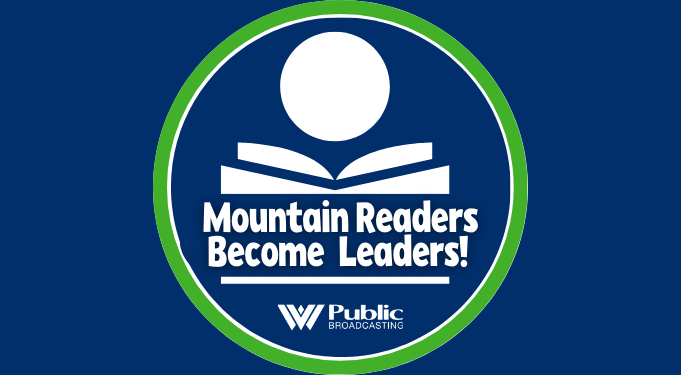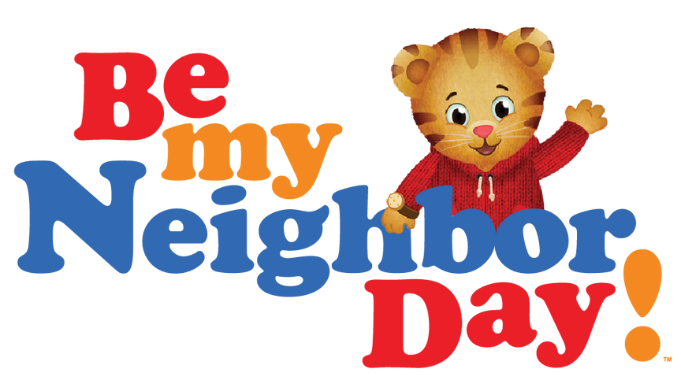This story was originally published by Mountain State Spotlight. For more stories from Mountain State Spotlight, visit www.mountainstatespotlight.org.
Perched on a plastic folding chair under the gymnasium’s basketball hoop, Keith Blankenship was concerned.
As Mingo County’s health director, Blankenship was responsible for close to 1,000 doses of COVID-19 vaccine sitting unused in the health department’s refrigerator — and he needed arms to put them in, fast.
But the gymnasium at the Larry Joe Harless Community Center in Gilbert, which on Wednesday was serving as a regional vaccine clinic, was largely quiet.
Blankenship surveyed the room. It was halfway past 10 a.m., and the first wave of early bird arrivals had thinned out. The dozen chairs in the waiting area, once full, now sat empty. “It’s bad,” he said. “We expected at least 100.” At the rate they were going, they’d be lucky to hit half that.
Bottom of Form
For months, West Virginia has enjoyed nearly universal praise — locally and nationally — for the speed of its vaccine rollout. The most visible public relations push has been from Gov. Jim Justice, who’s made the cable news circuit and held aloft a giant poster proclaiming the state’s #1 status in a speech before legislators earlier this year. But that luster is fading. In data published in The New York Times earlier this week, West Virginia’s first-dose vaccination rate among the elderly ranked second to last, just ahead of Hawaii.
The problem: Most who wanted to be vaccinated have been, and the remaining West Virginians just don’t want the shot, leaving local health officials scrambling to use up their shipments. To do this, they’re reaching further and further out into their communities to find willing takers. But vaccine hesitancy — a national problem that is particularly acute in West Virginia — is not an easy challenge to tackle, and critics question whether the state has done enough to address it. The group responsible for the state’s messaging around the vaccine has had funding challenges, and officials acknowledge that they’re having difficulty reaching some of the state’s most vulnerable populations. And health officials across the state are racing to beat back COVID before new, deadlier variants can take root.
Meanwhile, in Mingo County last Wednesday, the overworked health department was struggling to find arms. According to official data from the state health department, less than a quarter of Mingo County residents have been vaccinated, the lowest rate in the state. Blankenship said those statistics are wrong — they don’t include West Virginians that crossed the border to get their shot in Kentucky. By his estimates, half the county has already been vaccinated.
But, he worries, that’s not enough to stop the virus from continuing to spread — and taking more lives with it. Despite the vaccination effort, Mingo County’s COVID cases have not dropped. It is one of nearly two dozen counties across the state with an infection rate high enough to be classified “orange” on the state’s risk metrics.
Blankenship listed off potential reasons Mingo County residents are hesitant to get the vaccine, including a growing distrust in government, a lack of easy access to the vaccine in a highly rural county with poor public transit and general distaste for doctors.
“People in Mingo County is tough,” he said.
‘All you can do is educate’
For Stewart Johnson, the logical decision was to get the shot. He was at Wednesday’s clinic for his second Moderna dose.
Johnson, 66, is a retired coal miner. He said he generally avoids vaccines, but this was an exception. He’s worried about catching COVID. Many of the people in the community don’t wear masks or practice social distancing, and he wants to protect himself and his family. “The reward is a lot better than the risk,” he explained.
Johnson has been trying to convince his family to get vaccinated too. It hasn’t been easy. He has an 82-year-old sister who refused to get the vaccine because she believed it would alter her DNA. (It does not.) Johnson eventually won her over, but it was too late. Just days before her first dose was scheduled, he said, she contracted the virus.
“All you can do is educate,” Johnson said. He wishes doctors would go on TV and provide facts to counteract the fiction that he believes is being spouted in churches and on cable news.
Johnson isn’t the only one wondering if more can be done to combat misinformation.
Blankenship was on a call on Monday where local health departments asked state leaders to devote more resources to the problem. “We need more PSAs and more information put out there,” Blankenship said. He said his department doesn’t have the money to do it themselves.
Plans for a statewide media push were outlined by state officials in a draft planning document prepared for the U.S. Centers for Disease Control and Prevention and published online in October. The document, which has since been removed, listed seven different methods of “paid” advertising as part of “a statewide communication campaign,” including billboards, radio spots and television public service announcements. The campaign was to be run by a nonprofit, the Center for Rural Health Development, in partnership with a WVU research team.
At least some of this plan has been implemented. Elaine Darling, a senior program director at The Center for Rural Health Development, said in a written statement that the center launched a digital marketing campaign in December. Video and radio ads are now in the works, but haven’t been deployed yet. So far, the center has spent less than half of its original $350,000 grant, which was intended to last into the summer, Darling wrote.
Dr. Clay Marsh, West Virginia’s coronavirus czar, defended the state’s messaging efforts, calling them “very effective,” but acknowledged that convincing young people to get the shot remains a challenge. West Virginia recently recorded its first case of the Brazilian coronavirus variant, a version that has proved particularly deadly amongst the young. Marsh said the state had been “aggressive” — and would continue to be aggressive — in trying to identify the messaging that would resonate best.
Reaching everyone
But, so far, that messaging doesn’t appear to be reaching some communities that need it the most.
At a meeting of the COVID-19 Advisory Commission on African American Disparities in early April, one of the commissioners, Tiffany Samuels, grilled state officials about the lack of public service announcements targeting communities of color. Dr. Ayne Amjad, West Virginia’s top health officer, acknowledged the problem, and admitted the state’s current efforts weren’t effectively reaching some groups — singling out college students in particular. She said that the state’s “messaging group” had “needed more funding” in the past but now had federal assistance.
In an interview, Samuels said she believes the state needs to spend more money promoting the vaccine — and spend it in different ways. She also owns a beauty supply store in Fairmont and talks to a lot of African American women who are reluctant to get the vaccine. “These are the people that we now need to reach,” she said.
West Virginia data on COVID by race and ethnicity is incomplete, but national studies show that Black and Latino people are at an increased risk of contracting COVID and more likely to die.
“We’ve gathered all of the low-hanging fruit,” Samuels said. “Now it’s the more challenging fruit on the higher branches.”
Rather than focusing on Facebook and traditional digital advertising, she thinks the state should try paying local influencers on Snapchat and TikTok to help spread the word among younger West Virginians.
The state appears to be heeding her warnings. Just last week, West Virginia gave an additional $650,000 to The Center for Rural Health Development to expand its vaccine marketing campaigns, “to ensure that we are reaching all of the communities in our state.”
Mixed messages
Just outside the doors of the community center in Gilbert, a group of landscapers were shoveling mulch from a pickup truck onto a flowerbed. When asked if they’d been vaccinated, one — a young man — said, “I don’t trust it.” He would not give his name.
Meanwhile, up the hill from the clinic, Cathy Billups was carrying her mail into Gilbert’s post office. Billups, 70, said she was leery of the vaccine and that her decision to not get the shot was based on her faith.
“I’ve asked the Lord for guidance,” she explained. “He’s never led me to do it.”
A return to post-pandemic normalcy in West Virginia, Marsh explained, will depend on people currently on the fence about whether to get the vaccine.
Vaccine hesitancy has been dropping across the country. Still, nearly a third of West Virginians are hesitant or strongly unwilling to get the vaccine, according to March survey data published by the federal health department. The state’s hesitancy rate is the 14th highest in the country.
As of Friday, 39% of West Virginia’s population have received at least a single vaccine dose according to state health officials. Marsh said he is targeting a 50% vaccination rate, to bring the state in line with countries like the United Kingdom that have shown success in beating back the pandemic. But it’s just a target, “not a destination,” he explained.
Getting there is going to take herculean efforts by already-depleted local health departments. In Mingo County, Blankenship has repurposed a county van, previously used to respond to overdoses, as a mobile vaccination clinic. He vaccinated 90 people in a church in Dingess last week, and another two dozen at a volunteer fire department.
“You have to go to those people,” Blankenship said. It’s a strategy that he’s learned from fighting hepatitis A, but it’s also one that he had to delay deploying with the state’s initial focus on larger, centralized vaccination clinics.
His job has also been complicated by issues with the state’s centralized vaccine tracking system — which now encompasses three different databases.
Bill Crouch, head of the West Virginia Department of Health and Human Resources, admitted in March that having “three pieces of software all doing the same thing” had made things “difficult to manage.” The state signed a six-figure contract with a software company to develop a system to manage vaccine appointments, but has now announced it will abandon it in favor of a CDC-backed national system: vaccinefinder.org.
But Crouch has struggled to deftly execute this latest shift in messaging, leading to more confusion; he’s misspelled the name of the website (it’s a .org, not .com or .gov) twice in different public appearances. The other two URLs he mentioned do not exist.
After struggling with the state systems — and frustrated by Facebook’s algorithms, which failed to reliably surface health department announcements on followers’ feeds — Blankenship turned to a new piece of software developed by a Huntington technology company to get the word out about the vaccine. So far, about 900 Mingo residents have downloaded the app, which sent out notifications about the Wednesday clinic.
But, it wasn’t enough. Just before 2 p.m., as the clinic began to close, Blankenship’s team tallied the results. The good news: nearly 60 people had come in for their second dose — nearly everyone who had been scheduled. The bad news: only 13 people had been given their first dose. Blankenship had fallen far short of his 100-shot goal.
“It’s a sign that people just don’t want it,” he said. He wishes state leaders — who have cut funding to local health departments in recent years — would come down to visit Mingo to better understand the challenges he faces.
“I think we’ve done the best we can do,” he said.
























